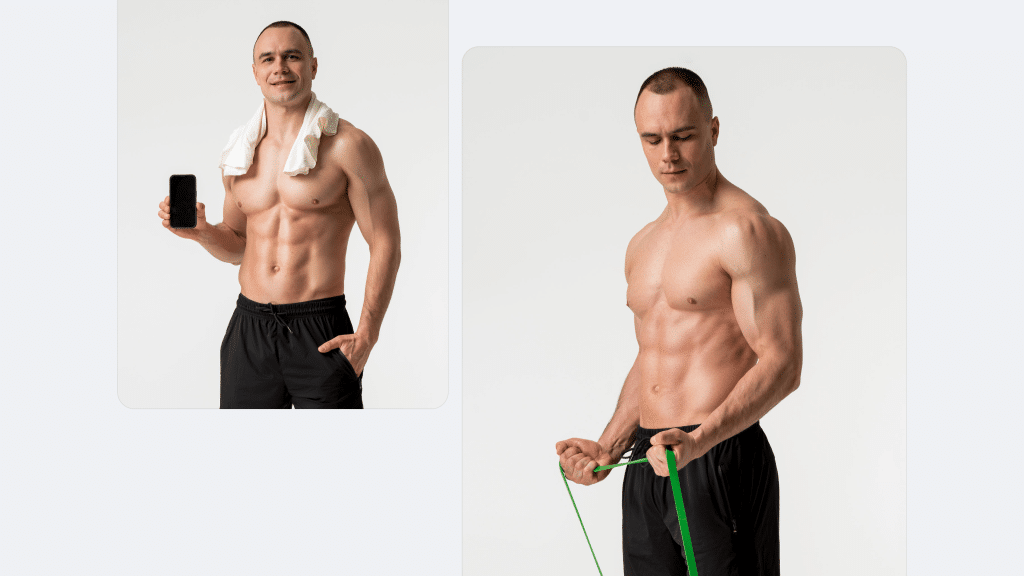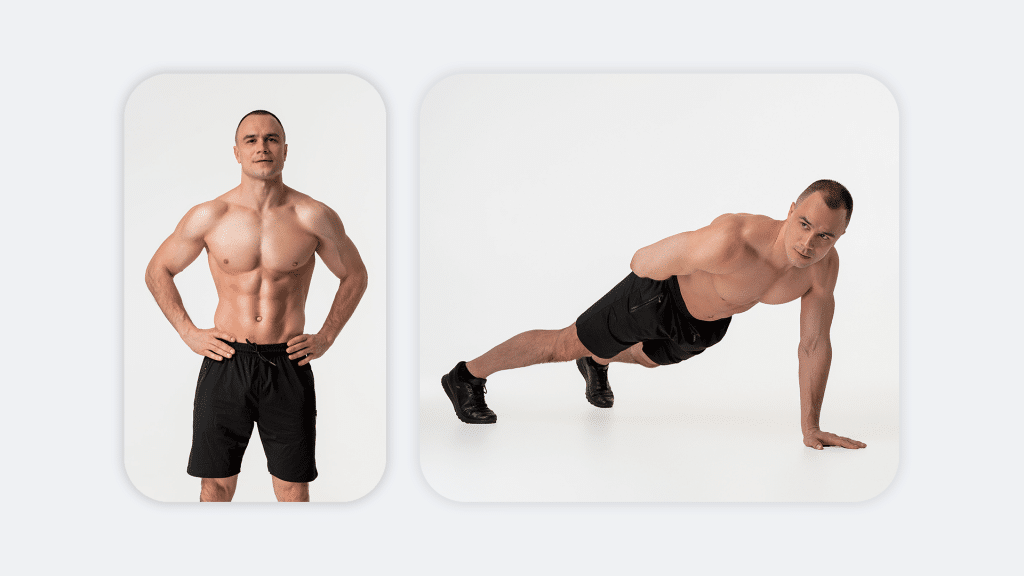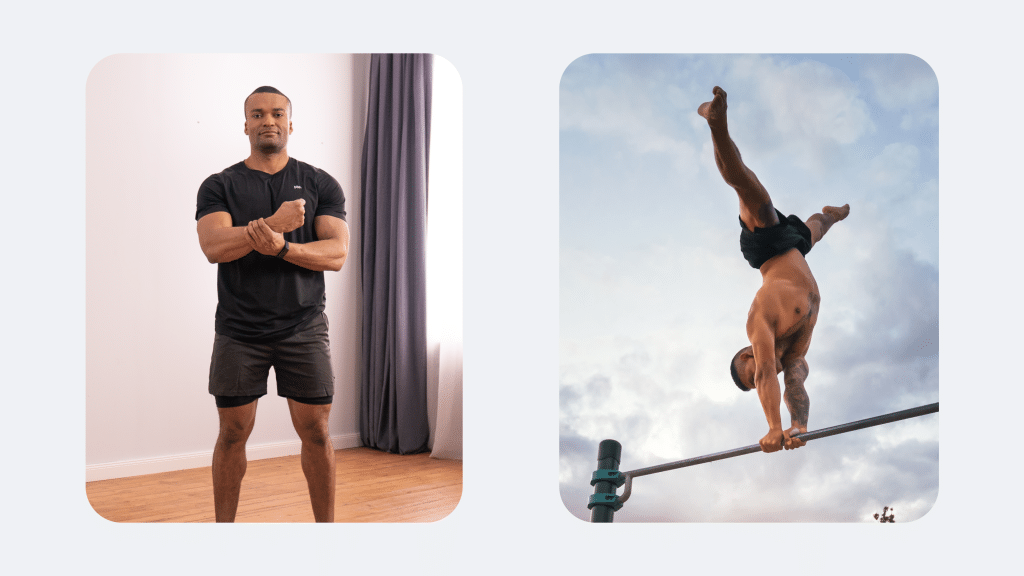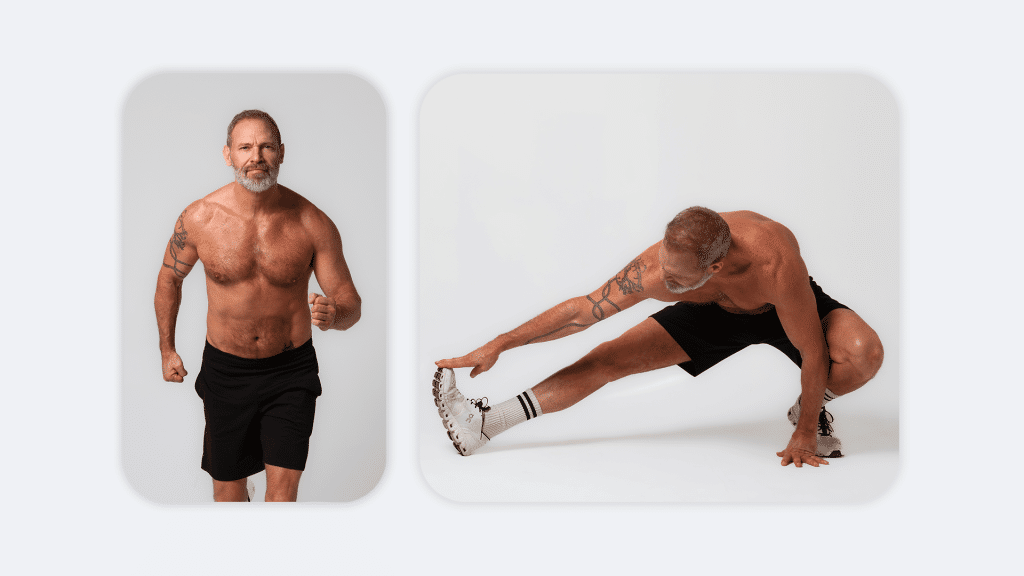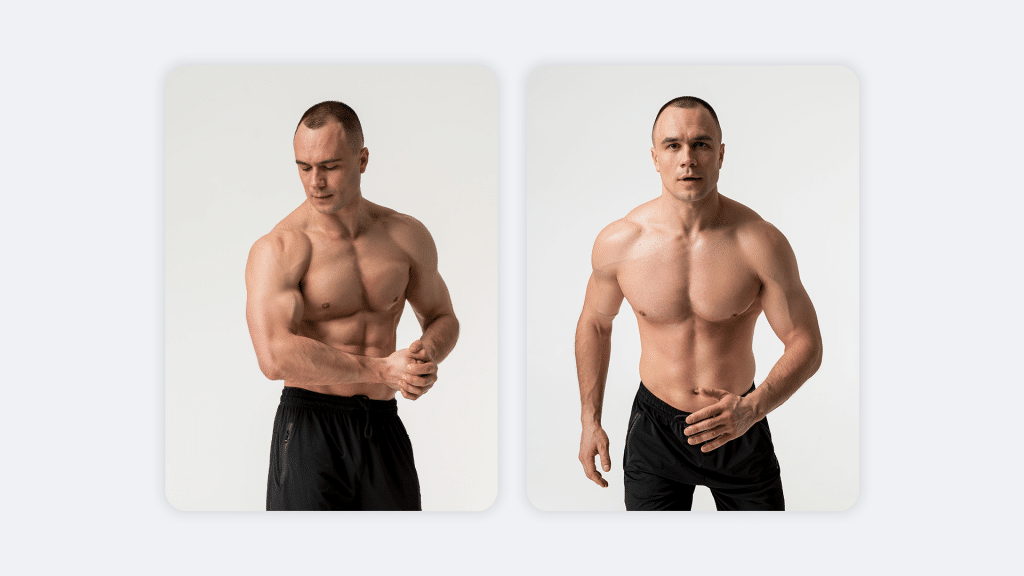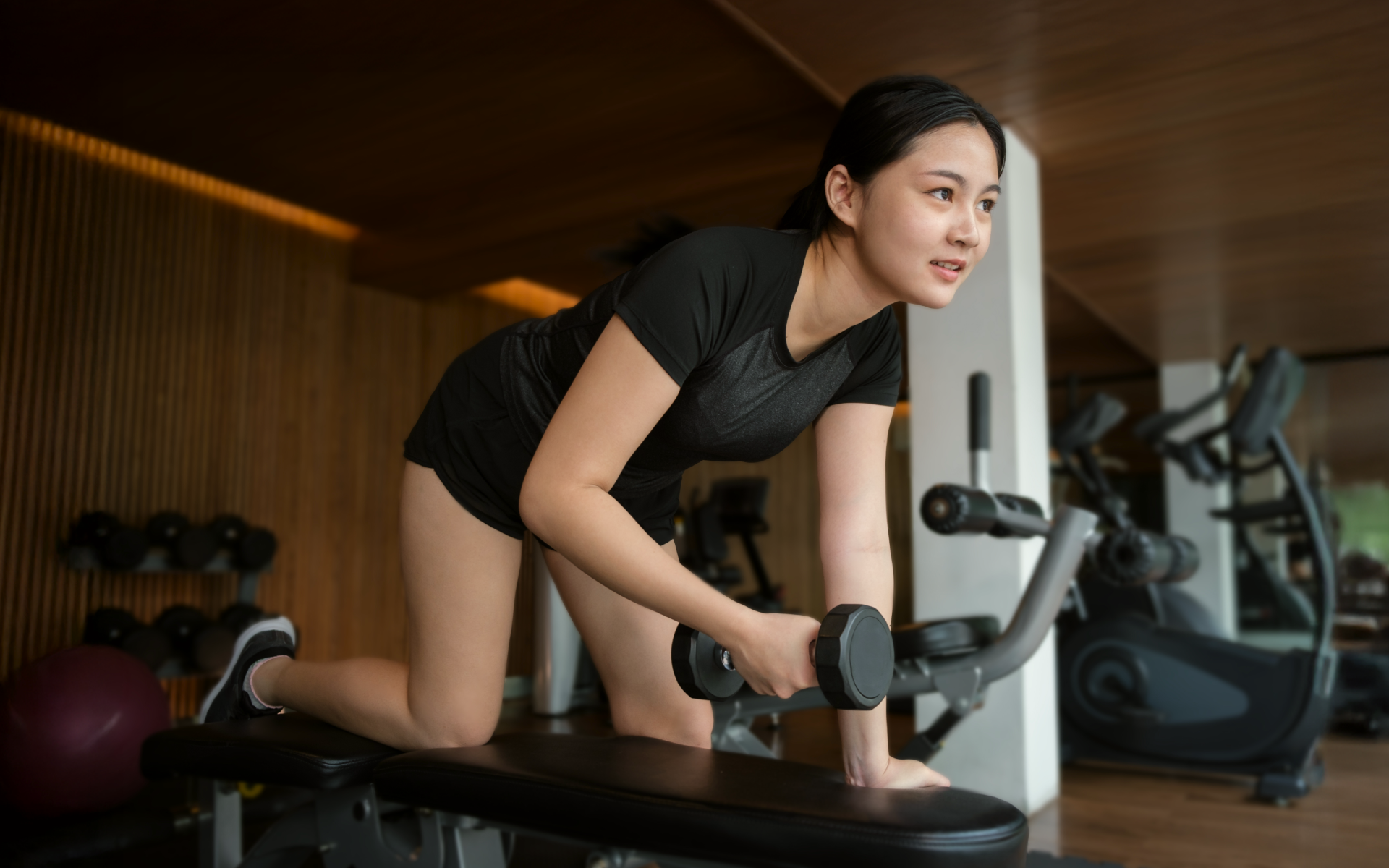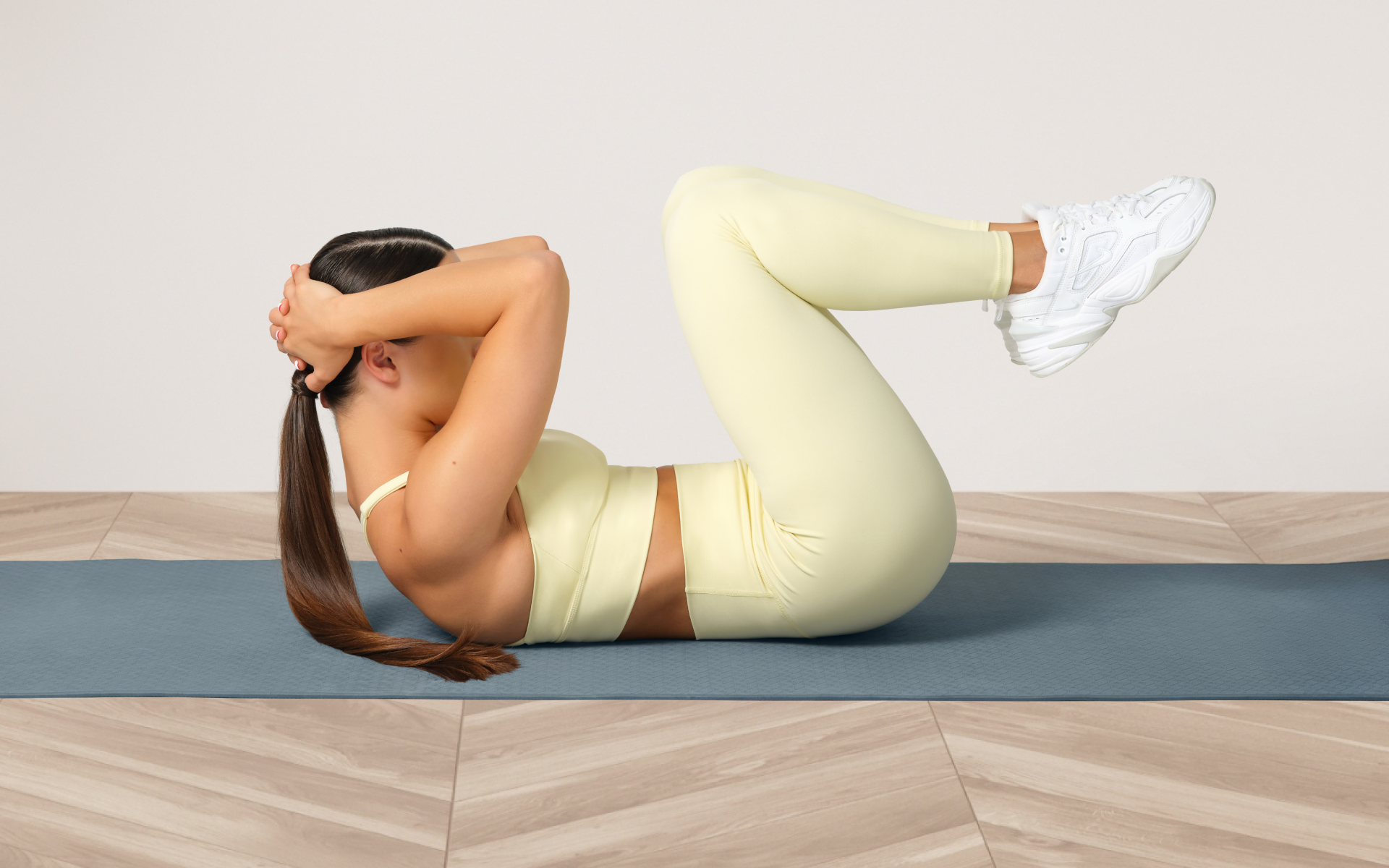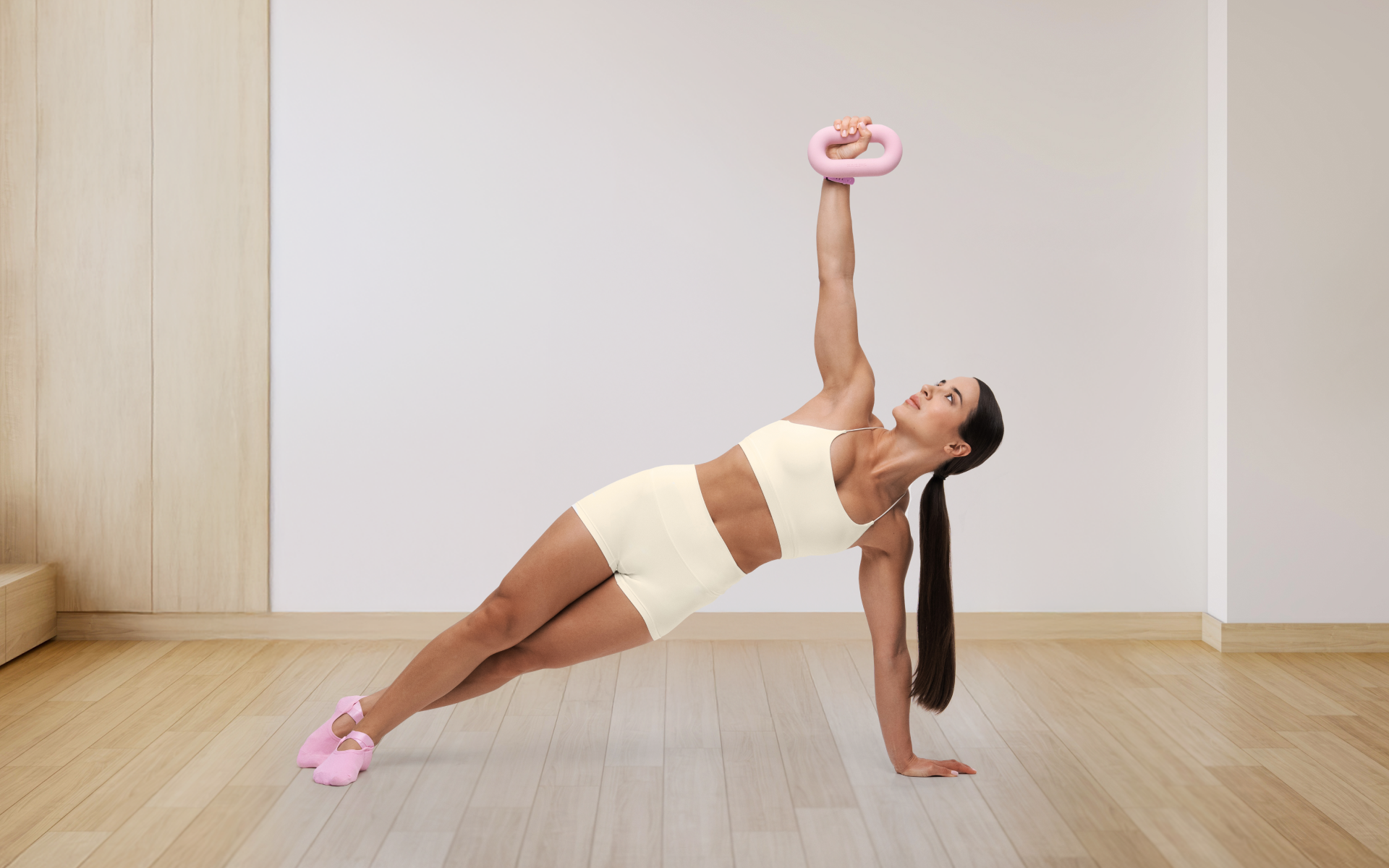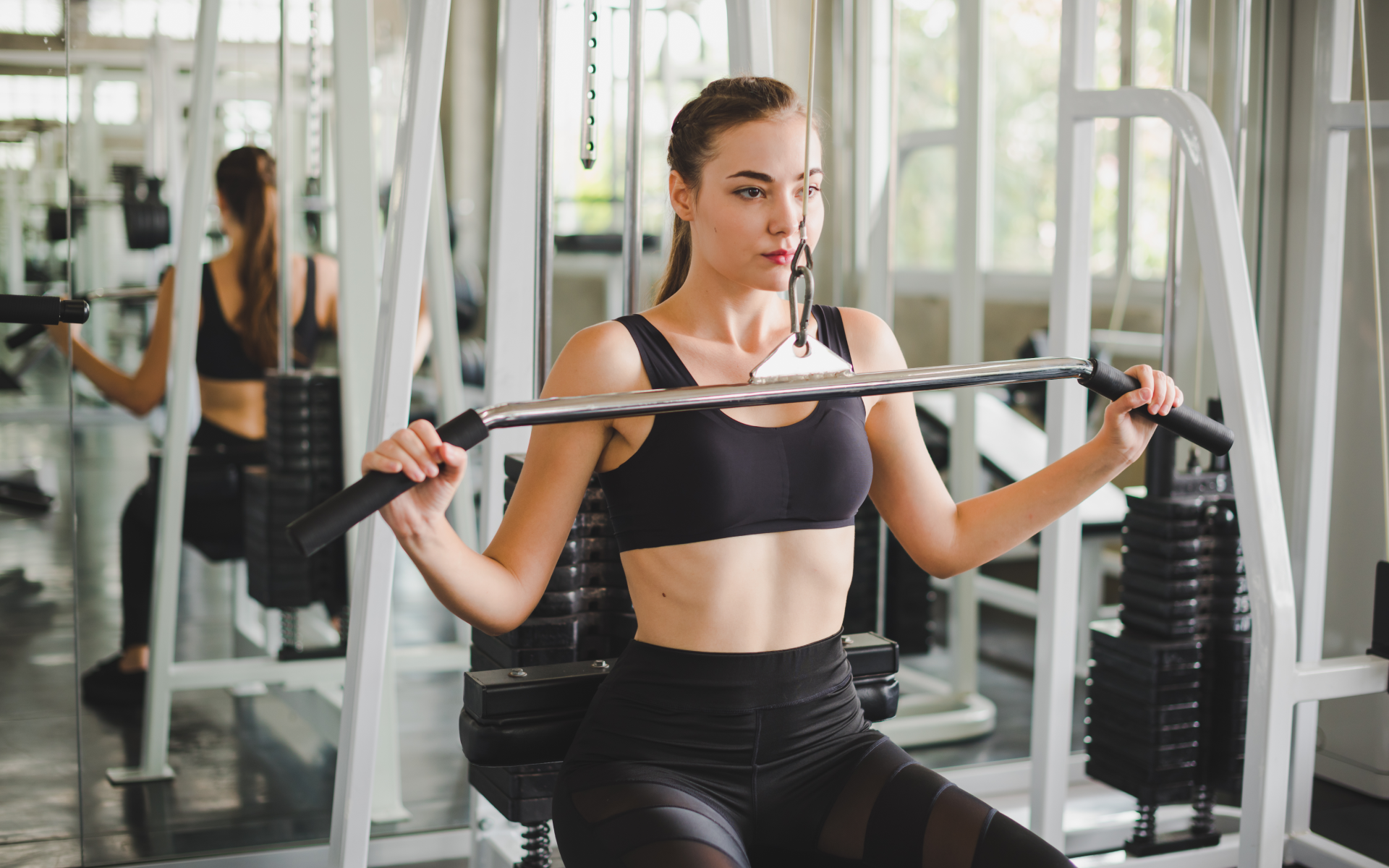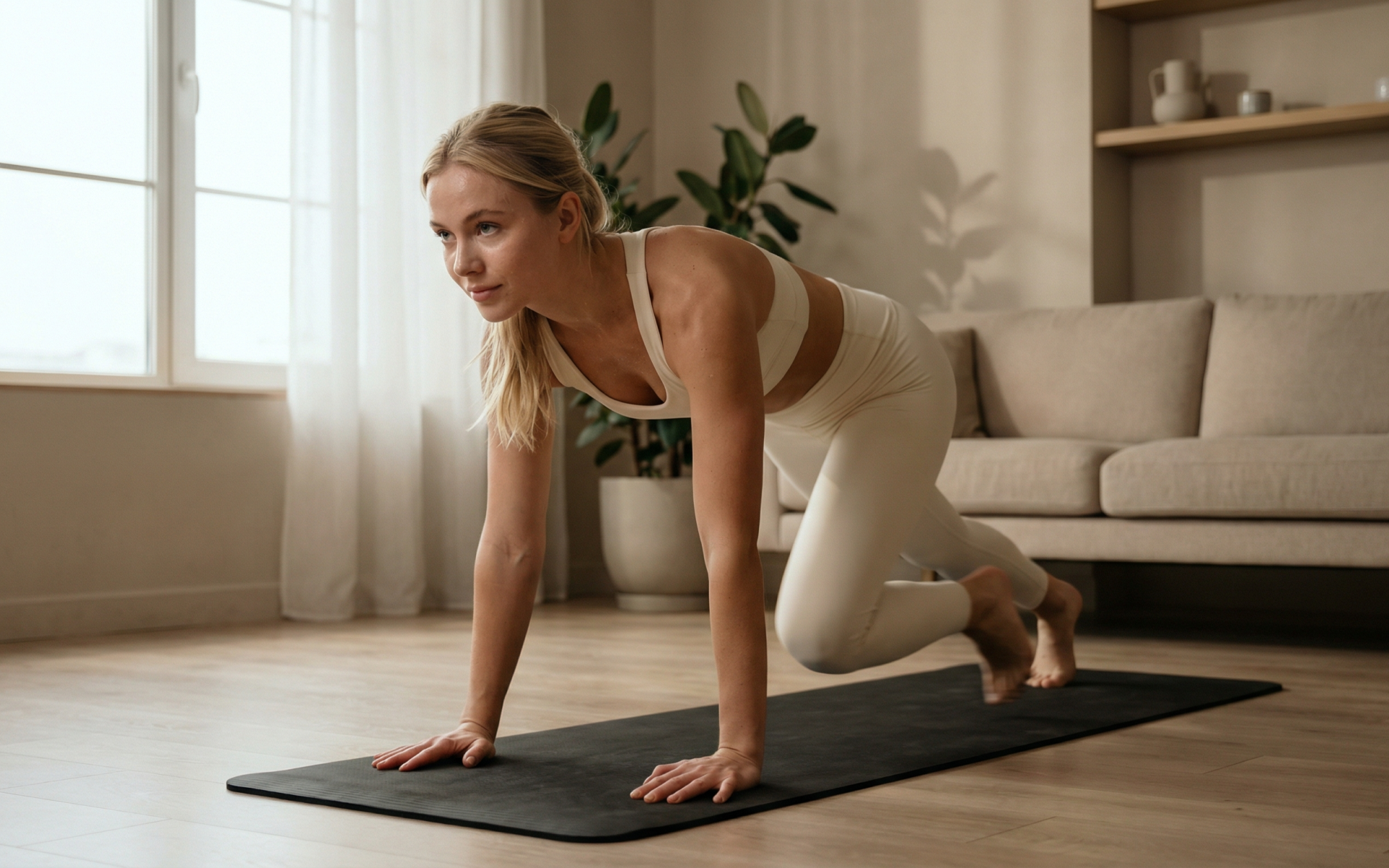Pulling is one of the basic movements that our bodies are designed to do. It is a fundamental part of everyday activities such as opening doors, carrying groceries, and climbing stairs.
Some of the major muscle groups involved in pulling movements include the back muscles, biceps, and forearms. The lower back, abs, and core are also engaged to stabilize the body during these movements.
To strengthen these muscles and improve your overall upper body strength, incorporating a calisthenics pull workout into your fitness routine is highly recommended (1).
This guide has everything you need to know about calisthenics pull workouts, including 8 must-have exercises to add to your routine.
Is Calisthenics Push or Pull?
Calisthenics includes both push and pull exercises. Push exercises involve movements where you push away from your body, like push-ups and dips. Pull exercises involve movements where you pull towards your body, like pull-ups and chin-ups. Both types are essential for a balanced workout routine, targeting different muscle groups and improving overall strength and fitness.
What Is The Best Calisthenics Pull Workout?
The best calisthenics pull workout is one that incorporates a variety of exercises targeting different muscle groups and movement patterns. This will ensure overall muscle development, prevent imbalances, and avoid boredom in your training routine.
This workout should gradually increase in difficulty as your strength improves, to continue challenging your muscles and promoting progress (2). It is also essential to listen to your body and allow for proper rest and recovery between workouts.
Some possible pull workout routines could include a combination of the exercises mentioned above, with sets ranging from 3-5 and repetitions ranging from 8-12, depending on individual fitness levels. As always, consult with a certified personal trainer or physician before starting any new exercise program.
Whether you’re a workout beast or just a beginner making your first foray into the world of fitness and dieting – BetterMe has a lot to offer to both newbies and experts! Install the app and experience the versatility first-hand!
What Pulling Calisthenics Exercises Should You Choose?
Before starting any calisthenics pull exercises, it is essential to warm up your muscles and joints to prevent injury (3). This can include a few minutes of jogging, jumping jacks, or dynamic stretches. Once you have warmed up, follow these steps for each exercise:
Pull-Ups
Pull ups engage mainly the back muscles, but also work the biceps, forearms, and core. To do a proper pull up:
- Stand under a sturdy pull-up bar.
- Grip the bar with your palms facing away from you, hands shoulder-width apart.
- Hang with your arms fully extended.
- Engage your core and pull your body upward until your chin is above the bar.
- Lower yourself back to the starting position with control.
1. Tips:
- Keep your shoulders down and back.
- Avoid swinging your legs for momentum.
- Exhale as you pull up, inhale as you lower.
2. Benefits:
Pull-ups are excellent for developing back and arm strength, enhancing grip strength, and improving shoulder stability.
Chin-Ups
Chin-ups are often mistaken for pull-ups, but they engage different muscles. Chin-ups primarily target the biceps and chest, with some engagement of the back muscles.
- Stand under a sturdy pull-up bar.
- Grip the bar with your palms facing towards you, hands shoulder-width apart.
- Hang with your arms fully extended.
- Engage your core and pull your body upward until your chin is above the bar.
- Lower yourself back to the starting position with control.
1. Tips:
- Keep your elbows close to your body throughout the movement.
- Keep tension on your biceps by not fully extending your arms at the bottom of the movement.
- Use a controlled pace for maximum muscle engagement.
2. Benefits:
Chin-ups are great for developing bicep and chest strength, while also targeting the back muscles to a lesser degree.
Read more: Beginner Calisthenics Moves: A Complete Guide to Getting Started
Bodyweight Rows
Bodyweight rows can be performed using a suspension trainer or by using a sturdy table or barbell placed at waist-height. This exercise targets the back muscles, core, and biceps.
- Set a barbell at hip height or use a low bar or suspension trainer.
- Lie underneath the bar and grab it with an overhand grip.
- Keep your body straight from head to heel.
- Pull your chest up to the bar, leading with your elbows.
- Lower yourself back to the starting position slowly.
1. Tips:
- Keep your core tight throughout the movement.
- Avoid flaring your elbows out too wide.
- Exhale on the pull, inhale on the return.
2. Benefits:
Bodyweight rows are ideal for strengthening the middle back, developing arm muscles, and improving posture.
Australian Pull-Ups
Australian pull-ups, also known as inverted rows, are a versatile exercise that targets the upper back, shoulders, and biceps.
- Set up a barbell at waist-height or use a sturdy table.
- Lie underneath the bar and grip it with an overhand grip, hands shoulder-width apart.
- Keep your body straight and your feet flat on the ground.
- Pull your chest up to the bar, squeezing your shoulder blades together.
- Slowly lower yourself back down to the starting position.
1. Tips:
- Focus on maintaining a straight line from shoulders to heels.
- Avoid using momentum to pull yourself up.
- Engage your core to stabilize your body.
2. Benefits:
Australian pull-ups help with developing upper back strength, improving shoulder stability, and enhancing grip strength.
Hanging Power Cleans
Hanging power cleans are a more dynamic pull exercise that works the back, traps, and biceps, as well as improving explosive power.
- Grip a barbell with an overhand grip, hands slightly wider than shoulder-width apart.
- Hang with your arms fully extended.
- By using your hips and knees, start the lift by driving upward as you pull the barbell up.
- Catch the barbell at shoulder height while bending your knees to absorb the weight.
1. Tips:
- Start with light weight to master the technique.
- Keep the bar close to your body during the pull.
- Ensure a fluid movement by coordinating hip, knee, and shoulder motions.
2. Benefits:
Hanging power cleans enhance overall body explosiveness, develop robust traps and biceps, and sharpen coordination and balance.
Towel Chin-Ups
Towel chin-ups add an additional challenge to regular chin-ups by demanding more grip strength and forearm activation.
- Drape a towel over a pull-up bar, creating two even ends to grip.
- Grasp each end of the towel, palms facing towards each other.
- Hang with arms extended.
- Pull yourself up until your chin is above the bar.
- Lower yourself back to the starting position slowly.
1. Tips:
- Focus on squeezing the towel tightly to engage your forearms.
- Keep your movements slow and controlled.
- Maintain consistent tension in your arms and back.
2. Benefits:
Towel chin-ups are excellent for building grip strength, increasing forearm endurance, and engaging additional muscles in the upper body during the pull exercise.
Commando Pull-Ups
Commando pull-ups are a variation that challenges your grip and promotes muscle symmetry by alternating your body position.
- Stand under a pull-up bar with palms facing inward, hands close together.
- Hang with arms fully extended and pull the right side of your head towards the bar.
- Alternate sides with each repetition by pulling the left side of your head towards the bar.
- Lower yourself back to the starting position with control.
1. Tips:
- Focus on maintaining a strong grip to prevent slipping.
- Keep your core engaged to stabilize your body.
- Control your descent to maximize muscle engagement.
2. Benefits:
Commando pull-ups improve grip strength, enhance forearm and bicep development, and aid in achieving muscle balance through asymmetrical movement.
One-Arm Assisted Pull-Ups
This exercise helps progress towards one-arm pull-ups by using assistance from the other arm.
- Stand under a pull-up bar and hold it with one hand.
- Use your opposite hand to grip your wrist or forearm on the bar.
- Hang with your arm fully extended.
- Pull up with your dominant arm, using the assisting arm for support.
- Lower yourself back to the starting position with control.
1. Tips:
- Start with assistance from a resistance band if needed.
- Gradually reduce assistance as strength increases.
- Keep your movement slow to enhance strength gains.
2. Benefits:
One-arm assisted pull-ups increase unilateral upper body strength, target specific muscle imbalances, and contribute to improved muscle coordination.
If you wish to free yourself from all the extra pounds that have been weighing you down for way too long, start using the BetterMe: Health Coaching app and overhaul your entire life!
How Do You Make a Pull Workout?
To create a pull workout, focus on exercises that target the muscles used in pulling motions, like the back, biceps, and specific parts of the shoulders. Here’s a simple guide to making your own pull workout:
1. Choose Your Exercises
Selecting the right mix of exercises is crucial for a well-rounded upper body workout. Incorporate exercises such as pull-ups, chin-ups, bodyweight rows, and Australian pull-ups. Each of these exercises targets different muscle groups, ensuring comprehensive development.
Pull-ups and chin-ups primarily work the lats and biceps, while bodyweight rows and Australian pull-ups focus on the middle and lower trapezius, rear deltoids, and rhomboids. This variety helps in building overall strength and prevents muscle imbalances.
2. Determine Sets and Reps
Tailor the number of sets and reps to your fitness level for optimal results. Beginners might find starting with 2-3 sets of 5-8 reps challenging yet achievable, allowing them to build strength gradually.
As you progress, increase the intensity by aiming for 3-4 sets of 8-12 reps. This approach enhances endurance and promotes muscle growth (4). Pay attention to your body’s signals and adjust the volume accordingly, to avoid overtraining.
3. Warm-Up
A proper warm-up is essential to prepare your muscles and reduce injury risk (3). Engage in dynamic movements such as arm circles and jumping jacks to increase blood flow and flexibility.
This process not only primes your upper body for the workout ahead but also enhances overall performance. Spend at least 5-10 minutes warming up to ensure your muscles are ready for the exertion.
4. Structure Your Routine
Organize your exercises in a sequence that promotes balanced muscle engagement. Consider starting with more challenging exercises like pull-ups, which require greater energy and focus. A pull up is a great way to warm up the muscles before going on to other pulling exercises.
Follow with bodyweight rows and other exercises that allow for controlled movements. This strategic arrangement prevents fatigue from compromising your form and maximizes the effectiveness of the workout.
5. Include Rest
Incorporate rest periods between sets to allow for recovery and maintain proper form. Typically, resting for 30 seconds to 1 minute is sufficient to replenish energy stores and prepare for the next set(5). Adequate rest supports sustained performance throughout the workout and reduces the risk of injury. Listen to your body and adjust rest times as needed to optimize recovery.
Read more: Pull-Up Alternative No Bar Exercises for Upper Body Strength
6. Cool Down
End your workout with a cooldown to facilitate recovery and prevent soreness. Incorporate stretches such as shoulder stretches and the child’s pose to improve flexibility and alleviate tension in the muscles.
Cooling down helps with gradually lowering your heart rate and prepares your body to transition back to rest (3). Dedicate a few minutes to stretching, focusing on areas that were heavily engaged during the workout.
This Pull Day Workout is the perfect place to get started.
Can You Get Ripped with Calisthenics?
Yes, it’s possible to get ripped with calisthenics. Calisthenics exercises use your body weight as resistance, making them an effective way to build muscle and strength.
By gradually increasing the difficulty of exercises and incorporating progressive overload principles, you can achieve significant muscle growth.
In addition to building muscle mass, calisthenics exercises also help burn fat, due to their high-intensity nature. This combination of muscle gain and fat loss leads to a more chiseled, defined physique.
However, achieving a ripped body solely through calisthenics may take longer than using traditional gym equipment. It is easier to progressively overload in a gym than when you are using your body weight because in a gym, you can simply pick up a heavier weight. However, with calisthenics you are using your body weight and not any external loads. It is essential to have patience and consistency in your training routine, while also maintaining a healthy diet.
Yes, a pull-up is a classic calisthenics exercise. It involves lifting your body weight using an overhead bar, primarily targeting the muscles in your back, shoulders, and arms. Calisthenics exercises like pull-ups rely on body weight for resistance, making them effective for building strength and muscle endurance. We’ve compiled a beginner friendly workout in our 4 Day Push Pull Workout Routine blog. Calisthenics can be enough for achieving a well-rounded fitness regimen, depending on your goals. It focuses on bodyweight exercises that improve strength, flexibility, endurance, and coordination. For many, calisthenics alone can enhance muscle tone and cardiovascular health. However, if your goal is to significantly increase muscle mass or strength, incorporating weight training might be beneficial (6). Yes, 30 minutes of calisthenics can be sufficient, especially if you maintain a high intensity and target different muscle groups. This duration can improve cardiovascular health, increase muscle endurance, and aid in weight management. The key is to focus on a variety of exercises to guarantee a full-body workout. Calisthenics three days a week can be effective for maintaining and building strength, improving flexibility, and enhancing overall fitness (5). It allows for adequate recovery time between sessions, which is crucial for muscle growth and preventing injury. To maximize benefits, make sure each session is challenging and progressively increases in difficulty over time. It’s safe to perform calisthenics twice a day if you manage the intensity and volume properly. This approach can be useful for breaking up workouts into shorter sessions and maintaining high energy levels. It’s equally important to listen to your body, have adequate recovery, and avoid overtraining, to avoid fatigue or injury.Frequently Asked Questions
Is a Pull-Up a Calisthenics?
Is Only Calisthenics Enough?
Is 30 Minutes of Calisthenics Enough?
Is Calisthenics 3 Days a Week Enough?
Is It OK to Do Calisthenics Twice a Day?
The Bottom Line
A calisthenics pull workout engages all the major muscle groups in your upper body and helps build strength and endurance. With proper form, progressive overload, and consistency, you can achieve significant muscle growth and a ripped physique. Remember to tailor the sets and reps to your fitness level, warm up before starting, structure your routine strategically, incorporate rest periods and cool down after each session for optimal results.
DISCLAIMER:
This article is intended for general informational purposes only and does not serve to address individual circumstances. It is not a substitute for professional advice or help and should not be relied on for making any kind of decision-making. Any action taken as a direct or indirect result of the information in this article is entirely at your own risk and is your sole responsibility.
BetterMe, its content staff, and its medical advisors accept no responsibility for inaccuracies, errors, misstatements, inconsistencies, or omissions and specifically disclaim any liability, loss or risk, personal, professional or otherwise, which may be incurred as a consequence, directly or indirectly, of the use and/or application of any content.
You should always seek the advice of your physician or other qualified health provider with any questions you may have regarding a medical condition or your specific situation. Never disregard professional medical advice or delay seeking it because of BetterMe content. If you suspect or think you may have a medical emergency, call your doctor.
SOURCES:
- Pulling Exercises for Strength Training and Rehabilitation: Movements and Loading Conditions (2017,mdpi.com)
- Progression of volume load and muscular adaptation during resistance exercise (2014,nih.gov)
- Warm Up, Cool Down (2024,heart.org)
- Progressive overload without progressing load? The effects of load or repetition progression on muscular adaptations (2022,nih.gov)
- Profiling Rest Intervals between Sets and Associated Factors in Resistance Training Participants (2018,nih.gov)
- The Effect of Breaking Up Sedentary Time with Calisthenics on Neuromuscular Function: A Preliminary Study (2022,nih.gov)

